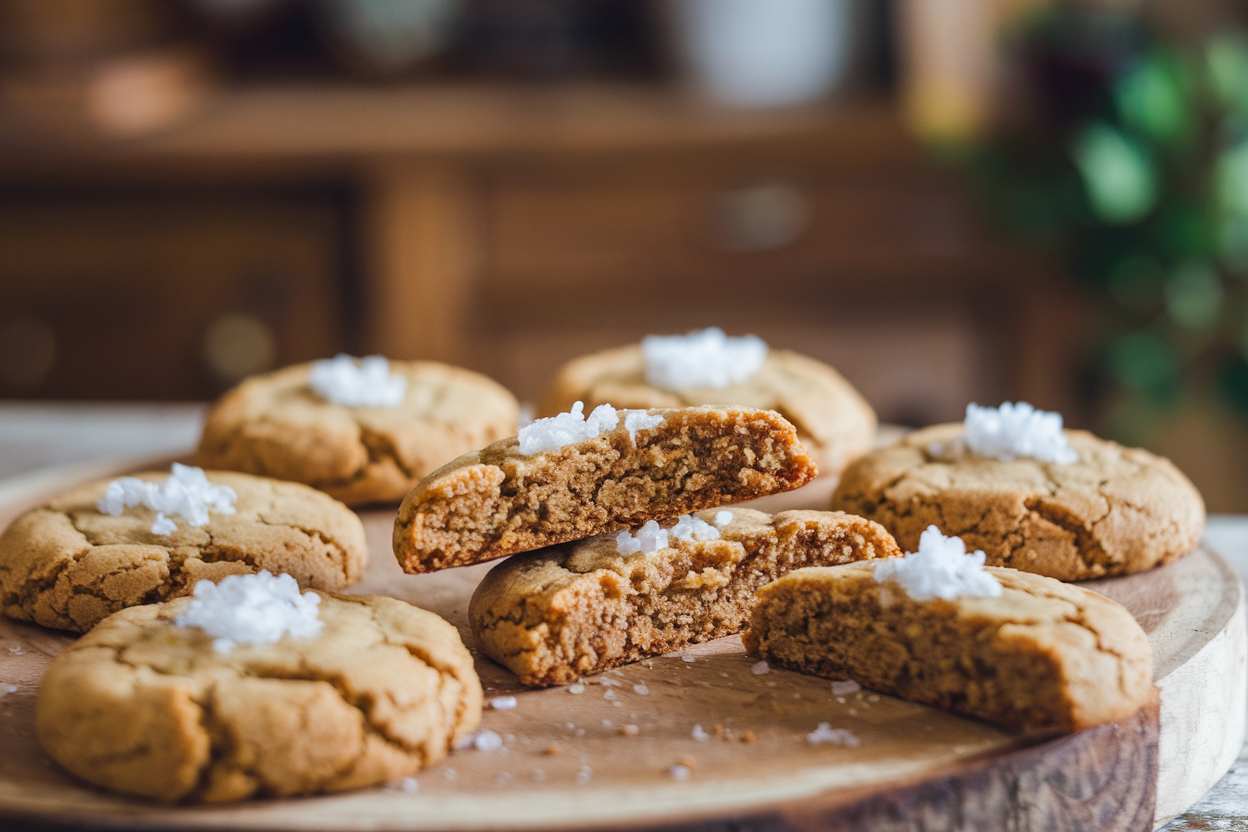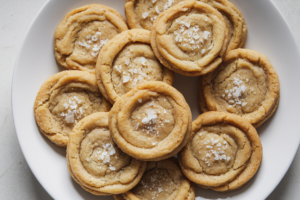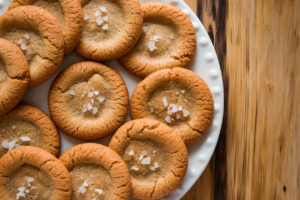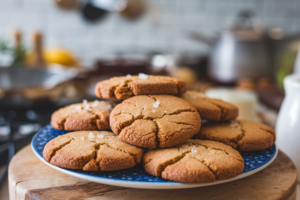When it comes to cookie recipes, few are as beloved and versatile as the classic chocolate chip cookie. However, if you’re looking to take your cookies to the next level, brown butter is the secret ingredient that will revolutionize your baking. In this comprehensive guide, we’ll dive deep into the science behind brown butter, perfecting the process, and how to make your very own brown butter chocolate chip cookies.
Introduction to Brown Butter in Baking
What Is Brown Butter?
Brown butter, also known as “beurre noisette” in French, is simply regular butter that’s been cooked until the milk solids caramelize. This process transforms the butter into a golden-brown liquid with a rich, nutty flavor that adds depth to baked goods, particularly cookies.
By browning butter, you’re essentially unlocking an entirely new layer of flavor that elevates chocolate chip cookies into a whole new category of deliciousness. The warm, caramelized notes from the browned butter pair beautifully with semi-sweet or dark chocolate chips.
Why Brown Butter Chocolate Chip Cookies Are So Popular
The popularity of brown butter chocolate chip cookies has skyrocketed in recent years, and for good reason. Not only do they offer the familiar comfort of a traditional chocolate chip cookie, but the brown butter imparts a deeper, more complex flavor that’s nutty, caramelized, and irresistible.
Cookies made with brown butter have a unique texture as well. They tend to be crispy on the outside and chewy on the inside, creating the perfect bite. If you haven’t yet tried baking with brown butter, you’re missing out on one of the best-kept secrets in the baking world.
For a deeper dive into how brown butter transforms recipes, check out Serious Eats’ Guide to Brown Butter.
Key Ingredients and How Brown Butter Changes the Recipe
In a typical chocolate chip cookie recipe, the butter serves as the fat that gives the cookie its moisture and richness. However, when butter is browned, it takes on a whole new role, not just as a fat but as a flavor enhancer.
The Impact of Brown Butter
- Flavor Profile: The process of browning butter caramelizes the milk solids, producing a nutty, toffee-like flavor.
- Texture: Using brown butter adds a subtle crispiness to the cookie edges, while keeping the center gooey and chewy.
- Appearance: Brown butter cookies often have a darker hue due to the caramelization process.
The Science Behind Browning Butter
When butter is melted and heated over medium heat, the water content evaporates, and the milk solids begin to brown. This reaction, known as the Maillard reaction, is what gives brown butter its signature nutty aroma and taste. The longer the butter is browned, the more intense the flavor becomes, but be careful not to burn it!
Here’s how to make the perfect brown butter:
- Use unsalted butter, as it allows you to control the saltiness in the recipe.
- Heat the butter in a saucepan over medium heat.
- Swirl the pan constantly to avoid burning.
- Watch for a light brown color and nutty smell – that’s when it’s done!
How to Brown Butter Perfectly (Step-by-Step Guide)
To master brown butter, follow these simple steps:
- Start with Cold Butter: Begin with unsalted butter straight from the fridge. This will give you more control as the butter melts and browns.
- Heat Gradually: Place the butter in a light-colored saucepan (so you can monitor the browning) over medium heat.
- Watch Closely: Once the butter melts, it will foam. Stir frequently to prevent scorching.
- Smell for the Nutty Aroma: As the foam subsides, the butter will turn a deep golden color. You’ll notice a nutty fragrance — this means it’s ready!
- Remove from Heat: Quickly pour the butter into a heatproof bowl to prevent it from burning further.
Best Type of Chocolate for Brown Butter Cookies
Chocolate chip cookies are nothing without the perfect chocolate. For brown butter cookies, the right chocolate can make or break the recipe. We recommend using semi-sweet or dark chocolate chips, as they balance the richness of the brown butter beautifully.
- Dark Chocolate: If you prefer a less sweet cookie, go for dark chocolate chips or chunks. The bitterness of the dark chocolate complements the caramelized flavor of brown butter.
- Milk Chocolate: For those who love sweeter cookies, milk chocolate can add a creamy sweetness that balances the butter’s nutty flavor.
- Chocolate Chunks vs. Chips: Opt for chocolate chunks if you prefer larger, melted pockets of chocolate. Chocolate chips hold their shape better but can still create delightful gooey spots in the cookie.
Check out Ghirardelli’s Guide to Baking Chocolate for more advice on the best chocolate for your cookies.
Balancing Sweetness and Saltiness: Why Salt Matters
Adding a touch of salt to your brown butter chocolate chip cookies can significantly enhance the flavors. The salt balances the sweetness and heightens the caramelized notes of the brown butter. Using a sprinkle of sea salt on top of the cookies before baking creates a sweet-salty combination that’s hard to resist.
Salted vs. Unsalted Butter
It’s important to note that when browning butter, you should always start with unsalted butter. This allows you to control the amount of salt added later on. If you’re using salted butter, be cautious about adding extra salt to the dough.
Best Flour and Sugar Combinations
Flour
When making brown butter chocolate chip cookies, the type of flour you use can greatly affect the texture. Here’s a breakdown of flour options:
- All-Purpose Flour: The standard choice for most cookie recipes. It creates a balanced texture — not too chewy, not too crumbly.
- Bread Flour: For those who prefer a chewy cookie, bread flour is a great option because of its higher protein content.
Sugar
The ratio of brown sugar to white sugar is also crucial in determining the texture and flavor of your cookies.
- Brown Sugar: Adds moisture and a slight caramel flavor.
- White Sugar: Contributes to the crispiness of the edges.
To create the perfect balance, we recommend a ratio of 70% brown sugar to 30% white sugar.
How to Get the Perfect Texture (Crispy on the Outside, Gooey on the Inside)
Achieving the ideal texture — crispy edges with a gooey center — comes down to a few important factors:
- Chill the Dough: Refrigerating your dough for at least an hour before baking helps to firm up the butter, which slows the spread of the cookies and creates a thicker, chewier texture.
- Baking Time and Temperature: Bake your cookies at 350°F (175°C) for 10-12 minutes. For softer cookies, remove them from the oven when the centers still look slightly underbaked.
- Cooling Time: Let your cookies cool on the baking sheet for 5 minutes before transferring them to a wire rack. This helps to set the edges while keeping the centers gooey.
Variations and Enhancements
Different Variations of Brown Butter Chocolate Chip Cookies
One of the best things about brown butter chocolate chip cookies is their versatility. Here are some delicious variations to try:
- Nuts: Add toasted pecans or walnuts for an extra layer of crunch and flavor.
- White Chocolate Chips: Swap out semi-sweet chips for white chocolate for a sweeter, creamier cookie.
- Espresso Powder: Add a teaspoon of espresso powder to the dough for a subtle coffee flavor that pairs beautifully with brown butter.
Experimenting with Mix-ins: Adding Nuts, Toffee, and More
The possibilities for mix-ins are endless. Here are some popular options:
- Toffee Bits: Adding toffee creates little pockets of caramelized sweetness.
- Coconut Flakes: For a tropical twist, try adding shredded coconut.
- Dried Fruit: Dried cranberries or cherries add a tart contrast to the sweet cookie dough.
Serving Suggestions for Brown Butter Chocolate Chip Cookies
For a truly decadent treat, serve your cookies warm with a scoop of vanilla ice cream or drizzle them with homemade caramel sauce. These cookies are perfect for any occasion, whether it’s a holiday gathering or an afternoon snack.
Storage Tips and How Long They Stay Fresh
Proper storage is key to keeping your cookies fresh:
- Room Temperature: Store in an airtight container at room temperature for up to 5 days.
- Freezing the Dough: You can freeze cookie dough for up to 3 months. Simply scoop the dough into balls and freeze on a baking sheet. Once frozen, transfer the dough balls to a freezer bag.
- Freezing Baked Cookies: Baked cookies can be frozen for up to 2 months. Just thaw at room temperature when you’re ready to enjoy.
For more tips on storing cookies, check out Food Network’s Guide to Storing Cookies.
FAQs About Brown Butter Chocolate Chip Cookies
What Is Brown Butter?
Brown butter is butter that has been cooked until the milk solids caramelize, resulting in a rich, nutty flavor that enhances baked goods.
Can You Substitute Regular Butter for Brown Butter in Cookies?
While you can substitute regular butter for brown butter, you’ll miss out on the toasty flavor that makes these cookies stand out.
How Do You Know When Butter Is Browned Perfectly?
Look for a deep golden color and a nutty aroma when browning butter. If it smells burnt, you’ve gone too far.
What Is the Best Type of Chocolate to Use?
We recommend using semi-sweet or dark chocolate chips for the best balance of flavor.
Can You Make These Cookies Without a Mixer?
Yes! You can make brown butter chocolate chip cookies by hand with a whisk and a spatula. Just be prepared for a bit of an arm workout.
Can You Make These Cookies Ahead of Time?
Yes, you can make the dough ahead of time and freeze it for later use. Just thaw the dough balls slightly before baking.
Conclusion
Brown butter chocolate chip cookies are a delicious twist on the classic cookie recipe, adding a rich depth of flavor that will impress anyone who tries them. Whether you’re serving them warm with a glass of milk or freezing a batch for later, these cookies are sure to become a family favorite.
With this guide, you now have everything you need to master the art of brown butter and create cookies that are crispy, chewy, and irresistibly delicious. Happy baking!



